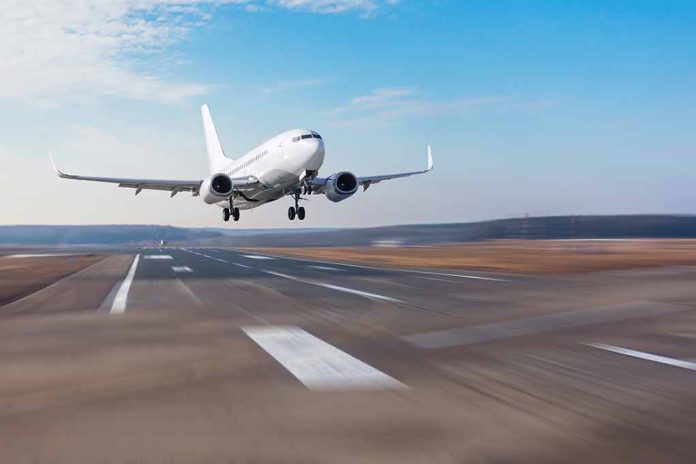
A devastating midair collision near Reagan National Airport has left no survivors, raising serious questions about the Federal Aviation Administration’s recent expansion of flight operations at the busy Washington D.C. air hub.
Top Takeaways
- An American Airlines regional jet collided with a military helicopter over the Potomac River, resulting in no survivors.
- Senator Tim Kaine had previously warned Congress about the dangers of adding more flights to Reagan National Airport.
- The FAA recently approved five additional daily slots at Reagan, despite concerns about the airport’s already congested airspace.
- This incident marks the deadliest U.S. air crash in nearly 24 years, prompting investigations by the FAA, NTSB, and Pentagon.
- The collision has reignited debates about air traffic management and safety regulations at busy airports.
Tragic Collision Shakes Nation’s Capital
On January 29, an American Airlines regional jet carrying 60 passengers and four crew members collided with a Sikorsky UH-60 military helicopter carrying three soldiers near Reagan National Airport. The collision sent both aircraft plummeting into the Potomac River, resulting in a catastrophic loss of life. At least 28 bodies have been recovered, with no expected survivors, making this the deadliest U.S. air crash in nearly 24 years.
The incident has sent shockwaves through the aviation community and raised alarming questions about air traffic management and safety protocols at one of the nation’s busiest airports. Reagan National Airport’s main runway, which handles 90% of flights, is already the busiest in the nation. The recent FAA reauthorization bill, which added five slots to Reagan’s daily schedule, has now come under intense scrutiny.
🚨BREAKING: DC Fire Chief John Donnelly officially just announced that there are no survivors in the DC plane crash.
President Trump: I have been fully briefed on the terrible accident which just took place at Reagan National Airport. May God Bless their souls. Thank you for the… pic.twitter.com/iQSWRSY3er
— AJ Huber (@Huberton) January 30, 2025
Senator’s Prescient Warning Ignored
Senator Tim Kaine had previously sounded the alarm about the dangers of increasing flight operations at Reagan National Airport. In a remarkably prescient statement, Kaine warned his colleagues about the potential consequences of their actions.
“God forbid waking up and looking in a mirror one day and say, ‘Wow, I was warned. I was warned and I shouldn’t have done this,'” Kaine cautioned.
Kaine’s warnings, now tragically vindicated, highlight the tension between commercial interests and safety concerns in air traffic management. The senator had argued against prioritizing convenience for a select few over the safety of countless individuals living in the airport’s vicinity.
Investigation Underway
The Federal Aviation Administration (FAA), National Transportation Safety Board (NTSB), and Pentagon have launched investigations into the catastrophic collision. Preliminary reports indicate that the Bombardier CRJ-701 jet lost altitude rapidly over the Potomac River after colliding with the military helicopter. Audio recordings revealed no response from the helicopter to air traffic control warnings before the crash.
“Do I think this was preventable? Absolutely,” stated Transportation Secretary Sean Duffy. “We have early indicators of what happened here and I will tell you with complete confidence we have the safest airspace in the world.”
The search-and-rescue operation faces significant challenges due to freezing water, wind, and darkness. However, Washington Fire Chief John Donnelly expressed confidence in recovering all victims’ remains. The plane was found upside down in three sections in waist-deep water, while the helicopter wreckage was also located.
Global Impact and Reaction
The tragedy has reverberated globally, with Russian figure skating coaches Evgenia Shishkova and Vadim Naumov among the victims. The international skating community has expressed shock and heartbreak over the loss. This incident marks a somber moment for U.S. aviation, as it represents the first fatal commercial airline crash since 2009.
As the nation grapples with this tragic event, questions about air traffic safety and management at busy airports like Reagan National are likely to dominate discussions in the coming weeks and months. The incident serves as a stark reminder of the critical importance of prioritizing safety in all aspects of air travel and the potential consequences of overlooking expert warnings.






















